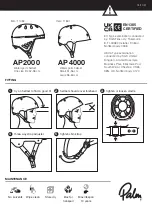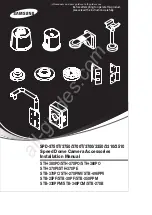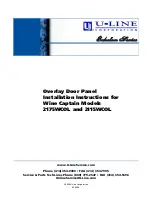
WWW.BALTIMOREAIRCOIL.COM
3
PFI AND PCC
Introduction
Unit Weights
Before rigging any unit, the weight of each section should be verified from the unit
submittal drawing. Unit print weights include the final assembled unit with all accessories.
Accessory weights (found on the respective drawing) can be deducted from the total
weight.
Anchoring
Seven-eighths inch (7/8”) diameter holes are provided in the bottom flange of the basin
section for bolting the unit to the support beams. Refer to the suggested support drawing
included in the submittal for location and quantity of the mounting holes.
The unit must
be level for proper operation
. Anchor bolts must be provided by others. The IBC rating is
only certified with standard anchorage locations. Using alternate anchorage locations or
alternate steel supports will void any IBC wind or seismic ratings. Contact your local BAC
Representative for details.
Nitrogen Charge of Condenser Coils (PCC Only)
As of June 2017, condensers shipped from the factory are charged with nitrogen to
15 psig. Relieve the pressure then cut and bevel coil connections in accordance with
generally accepted industrial practices. If the unit arrives without the holding charge, it
is reccomended a test be placed on the coil before installing. If you have any questions,
contact your local BAC Representative.
Cold Weather Operation
These products must be protected by mechanical and operational methods against damage
and/or reduced effectiveness due to possible freeze-up. Refer to “Cold Weather Operation”
in the
PFi and PCC Operation & Maintenance Manual
on www.BaltimoreAircoil.com, or
contact your local BAC Representative for recommended cold weather operation strategies.
Location
All evaporative cooling equipment must be located to ensure an adequate supply of fresh
air to the fans. When units are located adjacent to walls or in enclosures, care must be
taken to ensure the warm, saturated, discharge air is not deflected and short-circuited
back to the air intakes.
Each unit must be located and positioned to prevent the introduction of discharge air
into the ventilation systems of the building on which the unit is located and of adjacent
buildings. For detailed recommendation on BAC equipment layout, see our website at
www.BaltimoreAircoil.com or contact your local Representative.
Warranties
Please refer to the Limitation of Warranties (located in the submittal package) applicable
to and in effect at the time of the sale/purchase of these products.
Unit Operation
Prior to start-up and unit operation, refer to the
PFi and PCC Operation & Maintenance
Manual
shipped with the unit and also available at www.BaltimoreAircoil.com
Introduction
Safety
Shipping
Pre-Rigging Checks
Nitrogen Charge of
Condenser Coils
Unit Weights
Anchoring
Cold Weather Operation
Location
Warranties
Unit Operation
CAUTION:
Before an actual lift
is undertaken, ensure no water,
snow, ice, or debris has collected
in the basin or elsewhere in the
unit. Such accumulations will add
substantially to the equipment’s
lifting weight.
CAUTION:
Each unit must be
located and positioned to prevent
the introduction of discharge air
into the ventilation systems of
the building on which the unit is
located and of adjacent buildings.
NOTE:
Location must comply with
all local codes and regulations.
CAUTION:
Removing the coil
connection cap before releasing the
pressure can cause personal injury.
Use the valve to relieve pressure.






































